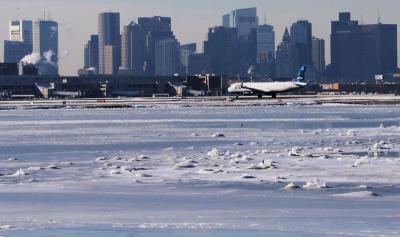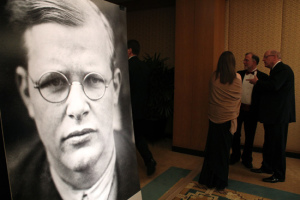Millions in US escape winter disaster, thanks to the pro-coal government

The recent Arctic air and freezing temperatures from the Polar Vortex killed at least 21 people. In contrast, we do not see people dying as quickly as this during the summer heat waves. It is a well-known fact that cold snaps kill more people per day than heat waves.
But why do we remain susceptible to cold weather in spite of possessing reasonably advanced weather forecasting systems and enough financial infrastructure to handle weather emergencies?
Cold kills. This is no secret and for centuries our human civilization has been wary of this.
However, there has been a colossal shift in our attitude towards cold winters, preparation for them, and our choice of energy systems to keep us warm. One major trigger for this shift is the belief that global warming has made our world warmer and that winters won’t be as cold as they used to be.
The global warming theorists also led us to believe that “snow will be a thing of the past.” Unfortunately, their efforts to brainwash the masses have resulted in a world where people are left unprepared for cold weather.
The winter of 2017–2018 and the ongoing impact of the polar vortex in the Northern Hemisphere left millions in danger of succumbing to freezing temperatures. Moreover, there has been no significant reduction in snowfall over the Northern Hemisphere.
Although the global warming hype has rendered our society vulnerable to cold winters in a number of ways, the most detrimental is its war on coal and how it has influenced energy policies in various countries.
Imagine freezing to death because you cannot afford heating. It may sound like an unlikely scenario, but it has occurred, to thousands of people, in cold countries that have shunned coal in recent years.
As Cornwall Alliance for the Stewardship of Creation President E. Calvin Beisner reported four years ago, drawing from government data, in the winter of 2014–2015, because of “fuel poverty” driven by skyrocketing electric rates resulting from the United Kingdom’s drastic switch from coal to wind energy, an estimated 40,000 excess winter deaths (EWDs) occurred in England and Wales, the most since 1999–2000 (48,440) and topping the flu-induced spike of 2008–9 (36,450). In each of the five winters leading up to that, England and Wales recorded an average of about 27,860 EWDs.
Research by the World Health Organization concludes that from 30 to 40 percent of EWDs in Europe and Great Britain over that period are attributable to fuel poverty. If that is so, then fuel poverty caused an average of 8,358 to 11,144 deaths in each of those winters in England and Wales alone.
China’s winter fuel crisis in 2017 was a classic example. The Chinese government, in order to please the climate crusaders in Brussels and Paris, had introduced various “green” reforms.
One was Beijing’s decision to force millions of households to abandon coal for natural gas. The country imposed heavy restrictions on coal-use in the northern villages. When winter arrived, thousands of families were left without heating.
This year, Beijing has scrambled to make sure there is enough coal to avoid a repeat of 2017. China’s fall-back to coal is a reminder that any anti-coal solution is likely to be a short-lived fantasy, detached far from the reality of practical energy demand.
Some of the highest electricity prices in the U.S. are found in states like California that rely heavily on renewables and have been phasing out conventional energy sources like coal and nuclear.
A repeat of the Chinese debacle could have played out in the Midwest if states there had espoused an anti-coal stance like California’s. An analysis of electricity prices in the U.S. suggests that both wind and solar do cause an increase in electricity prices.
Moreover, wind and solar do not function well in freezing conditions. This means that in winter, when both wind and solar fail, there is greater pressure on the energy sectors that rely on them to generate enough electricity to meet increased demand.
Unlike renewables, coal is a reliable energy source that has stood the test of time. More importantly, the coal energy sector has evolved drastically in recent decades.
Most of the developed countries now use “clean-coal” technology, with significantly lower emissions and less dust. In fact, their safety and efficiency are so recognized that Japan is currently exporting its clean coal technology to other countries.
Fortunately, the Trump Administration in the U.S. has ended the Obama Administration’s war on coal. Consequently, the country was not pushed to its limits to meet energy demands during the winter.
Moreover, the rapid development of the shale gas sector meant that the U.S. energy sector didn’t have to make foolish investments in less-reliable, more-expensive, highly-intermittent, and volatile renewable energy sources like wind and solar. It also meant electricity prices were kept in check.
Climate-obsessed policy makers have put millions in danger because of their anti-fossil fuel, and especially anti-coal, mindset. The dangers from winter weather are likely being made worse by so blinded by their policies.
The American Midwest and the rest of the country can relax for now. But in coming years, the country’s energy affordability will be determined by the energy policies of the next administration.
Vijay Jayaraj (M.Sc., Environmental Science, University of East Anglia, England), Contributor for Developing Countries, for the Cornwall Alliance for the Stewardship of Creation, lives in Chennai, India.




























